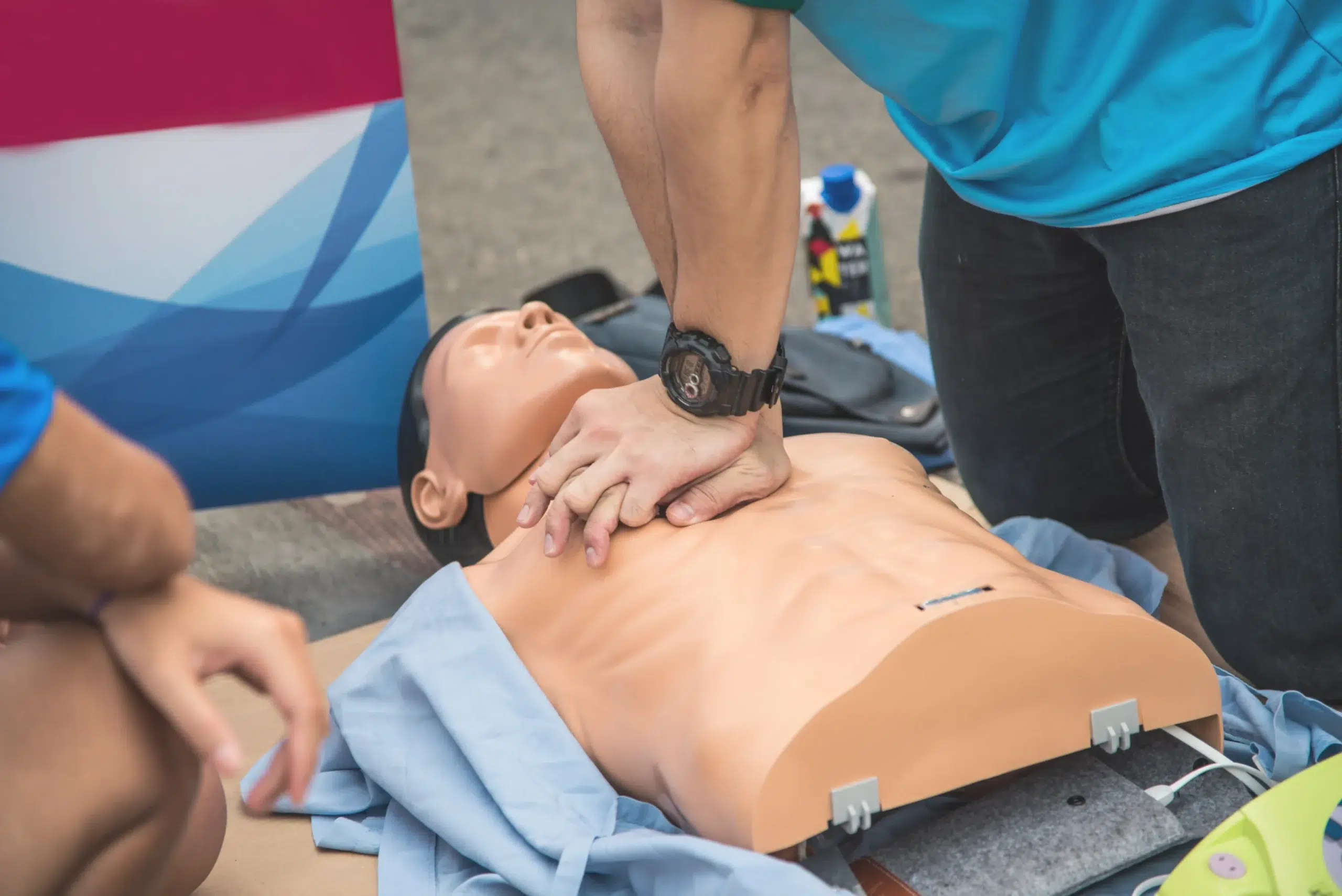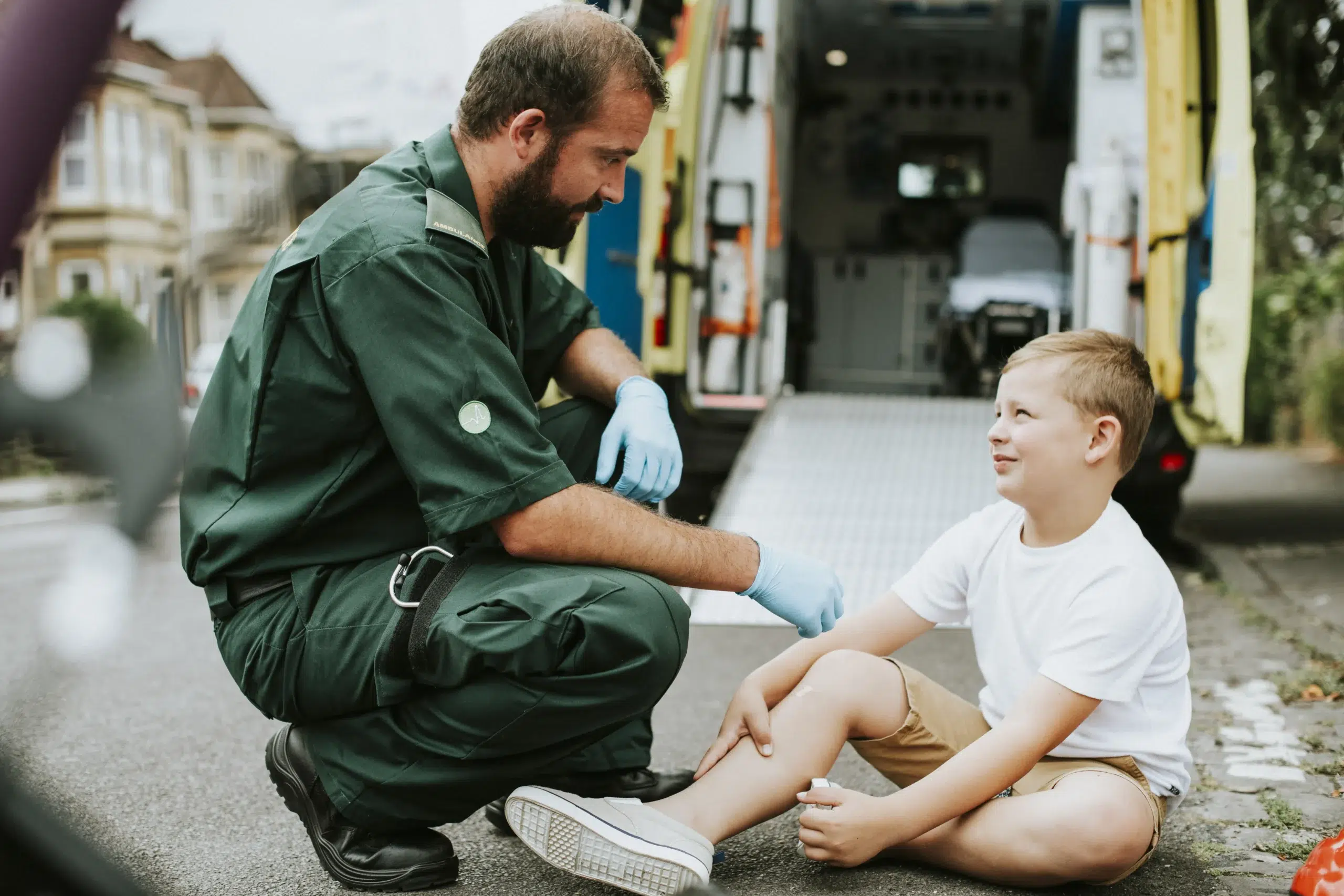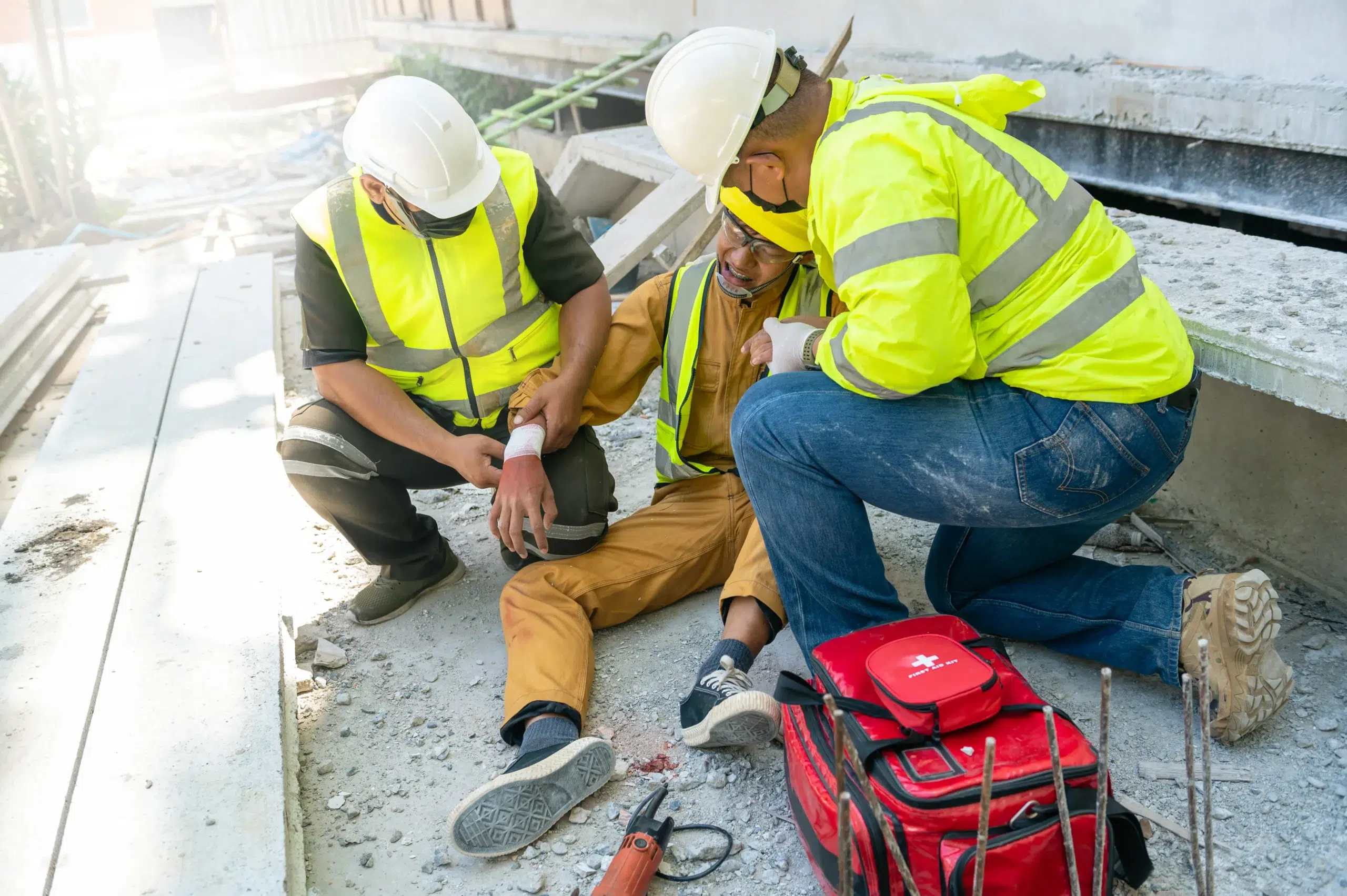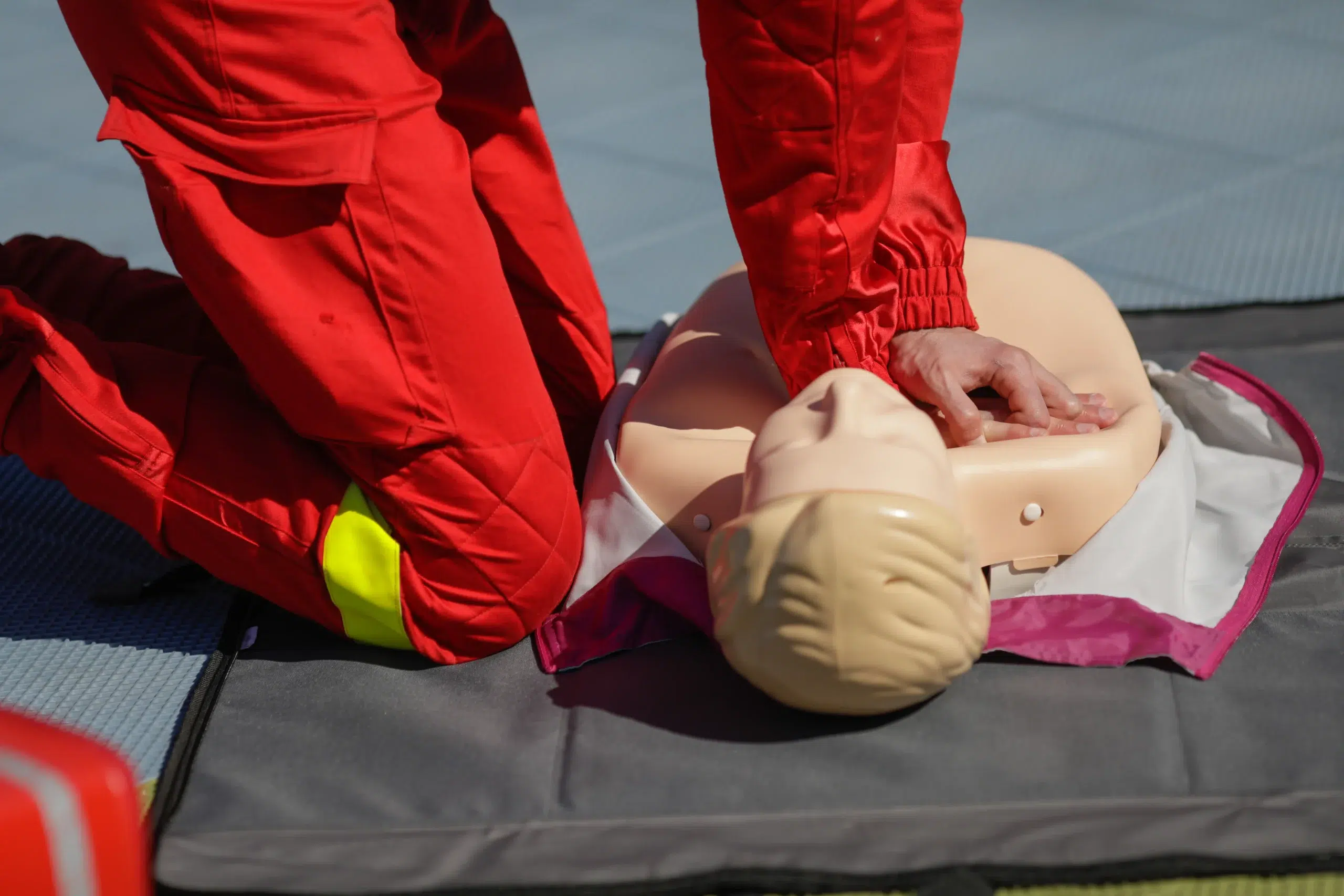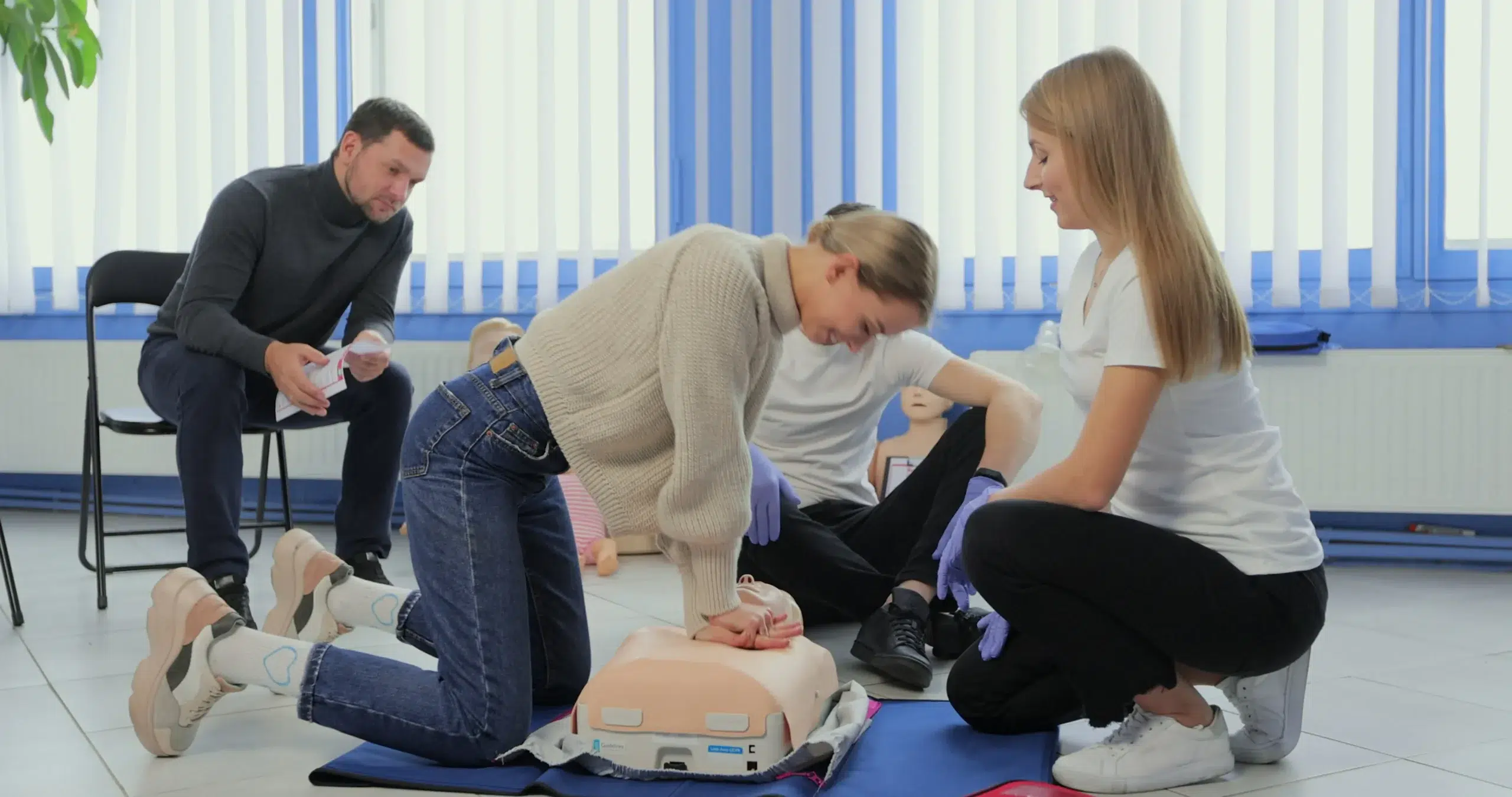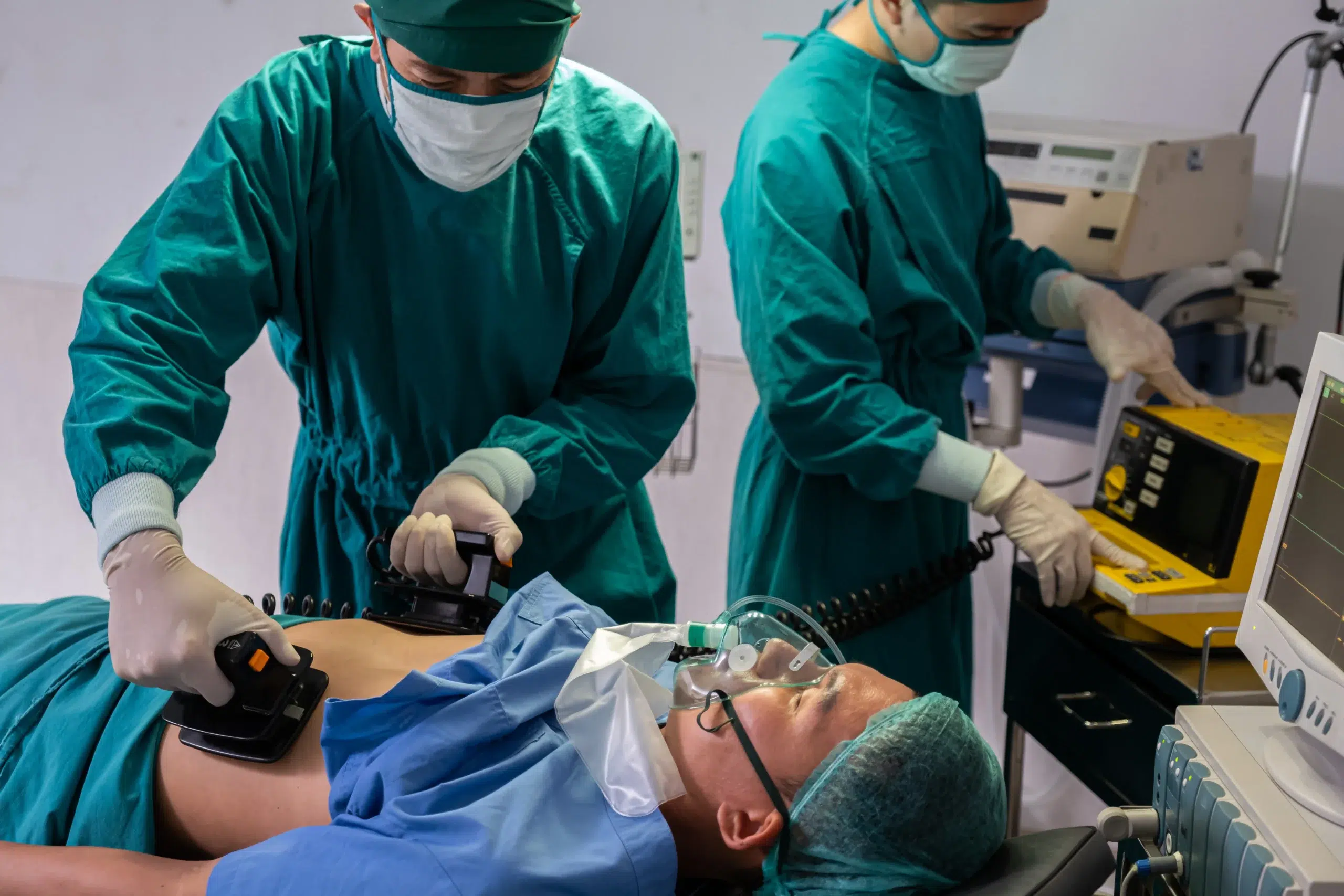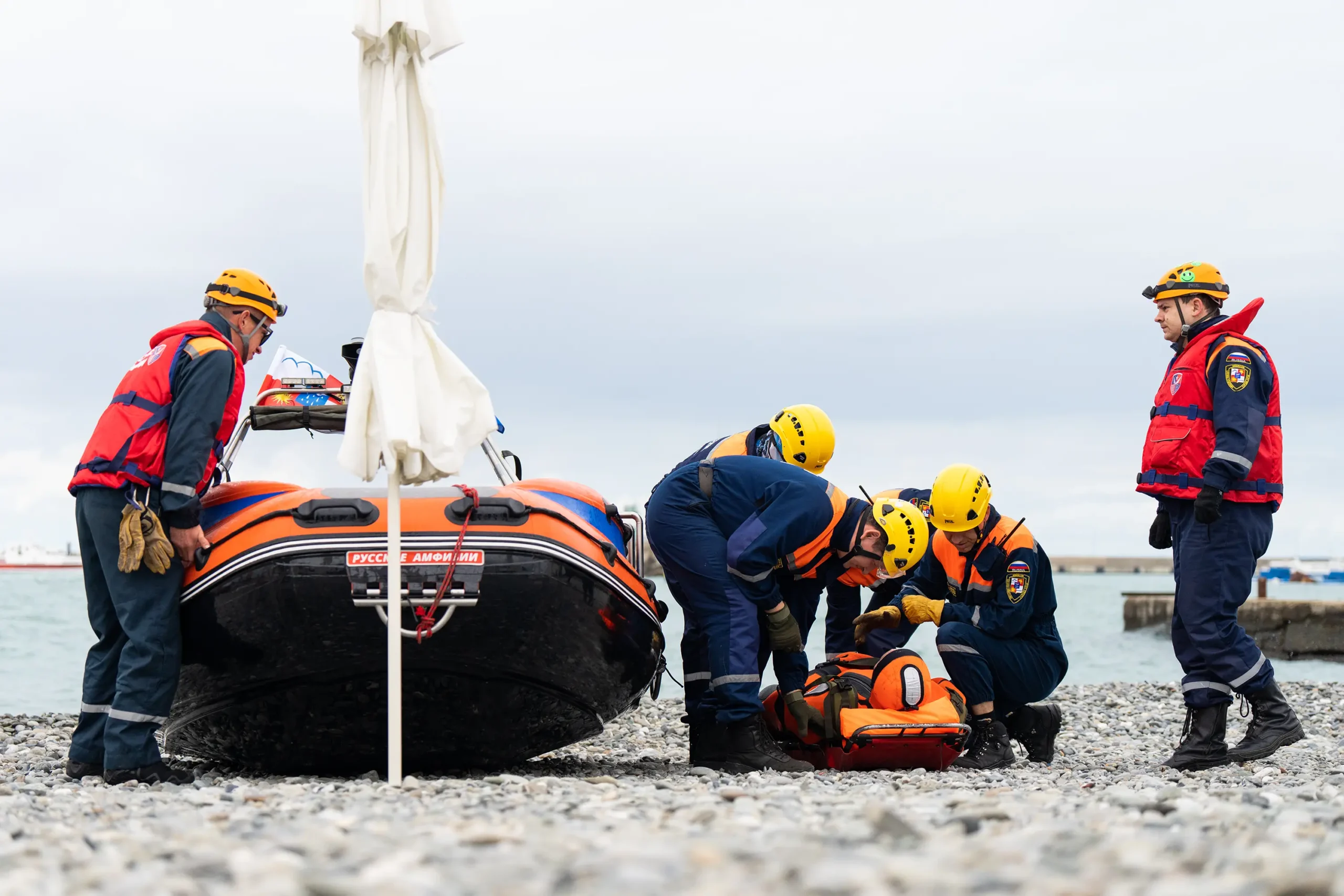In a medical emergency, seconds can matter. Knowing Basic Life Support (BLS) can empower you to provide immediate care, potentially making all the difference while waiting for paramedics. This guide is your go-to resource for understanding BLS, from its core components and benefits to finding “BLS classes near me” and choosing the right training program. We’ll also delve into the costs of BLS certification, the different learning options available, and how to maintain your skills once you’re certified. Whether you’re a healthcare provider or simply someone who wants to be prepared, this guide will equip you with the knowledge you need to make informed decisions about BLS training.
Key Takeaways
- BLS certification provides essential life-saving skills: Learning CPR, how to use an AED, and recognizing medical emergencies empowers you to act quickly and confidently when needed. Find a course format—in-person, online, or blended—that works best for you.
- Locating a BLS course is easier than you think: A quick online search, checking with local hospitals, or contacting community centers can help you find convenient training options. Consider accreditation, instructor experience, and class size when choosing a provider.
- Staying current with your BLS certification matters: Renew your certification every two years and explore continuing education to keep your skills sharp and your knowledge up-to-date. This ongoing commitment ensures you’re always prepared to provide effective assistance.
What is BLS?
Basic Life Support (BLS) is a level of medical care used for victims of life-threatening illnesses or injuries until they can receive full medical care at a hospital. It is critical for maintaining a patient’s airway, circulation, and breathing. Anyone can learn BLS, but it’s especially important for healthcare providers and first responders. Because BLS can be the difference between life and death, BLS certification is often a job requirement in healthcare. If you’re looking for “BLS classes near me,” you’ll find a variety of options available.
Definition and Importance
BLS focuses on providing immediate care to someone experiencing a medical emergency. These emergencies can include cardiac arrest, respiratory distress, or an obstructed airway. BLS aims to keep a person alive until they can receive more advanced medical treatment. It emphasizes early recognition of emergencies and teaches the skills needed to respond effectively. For healthcare professionals, BLS certification demonstrates a commitment to patient safety and high-quality care. It also creates a foundation for advanced life support training. BLS certification shows you have the skills to handle these situations.
Skills You’ll Learn
BLS training covers core life-saving techniques, including CPR (cardiopulmonary resuscitation), how to use an AED (automated external defibrillator), and relief of choking. You’ll learn to assess a patient’s condition quickly and perform chest compressions, rescue breaths, and other essential interventions. High-quality CPR is a cornerstone of BLS, ensuring adequate blood flow and oxygen to vital organs during cardiac arrest. BLS classes also teach you how to recognize the signs of a heart attack or stroke. Early intervention in these situations can significantly improve patient outcomes. Knowing how to perform CPR can make all the difference.
Find BLS Classes Near You
Finding the right BLS class shouldn’t feel like searching for a needle in a haystack. Here’s how to find BLS classes near you:
Use Online Search Tools
Start with a simple online search. Type “BLS classes near me” or “BLS certification [your city]” into your favorite search engine. This will give you a good starting point and show you local providers like Millbrae CPR Classes. You can also use specialized websites like the American Heart Association’s course locator to find certified instructors and classes. Many excellent training providers offer BLS courses in Millbrae and the surrounding areas.
Check Local Healthcare Institutions
Hospitals, clinics, and other healthcare facilities frequently offer BLS classes for their staff and the community. Check the websites of hospitals in your area or give them a call to see what courses they have available. Since BLS certification is essential for healthcare providers, these institutions are a reliable resource. Most BLS certification courses don’t have strict prerequisites, but applicants should be prepared to learn hands-on skills, practice CPR, and pass both a written and practical exam.
Contact Community Centers and Fire Departments
Your local community center or fire department can be another great resource. They often host BLS classes or can connect you with organizations that do. Reaching out to these local resources can often uncover convenient training options. Safety Training Seminars, also known as San Mateo CPR Courses, provides AHA-certified courses in CPR, BLS, ACLS, and PALS in Millbrae. Don’t hesitate to reach out—they’re often happy to help.
Top BLS Certification Providers
Finding the right BLS certification provider is key to receiving high-quality training. Here are some of the most recognized organizations and institutions offering BLS certification courses:
American Heart Association (AHA)
The AHA is a leading authority on CPR and emergency cardiovascular care. They offer a wide range of BLS certification courses designed for healthcare professionals and other individuals who need to know how to perform CPR and other life-saving skills. AHA certification is widely accepted and respected.
American Red Cross
The American Red Cross is another well-known and trusted provider of BLS certification. They offer a variety of courses, including options for individuals, groups, and healthcare providers. Red Cross BLS certification is recognized nationally.
Millbrae CPR Classes
For those in the San Mateo, Daly City, and Millbrae areas of California, Millbrae CPR Classes offers convenient and comprehensive BLS training. As an AHA Training Center, their courses follow the latest AHA guidelines and result in an AHA BLS certification. They also offer other specialized training like EMSA Child Care Health & Safety and the RQI program. Check out their group discounts for added value. Their low price guarantee ensures competitive pricing.
National Safety Council (NSC)
The NSC is a national non-profit organization dedicated to promoting health and safety. They offer a range of CPR and first aid training courses, including BLS certification. NSC courses are designed to meet OSHA requirements and are suitable for workplaces and individuals.
Local Hospitals and Medical Centers
Many local hospitals and medical centers offer BLS certification courses to their staff and the wider community. These courses are often a convenient and affordable option, especially for those already affiliated with a particular hospital system. Check with your local hospitals or search online for “BLS classes near me” to find options in your area.
In-Person vs. Online BLS Classes
Choosing between in-person and online BLS classes depends on your learning style, schedule, and budget. Both have their own advantages, and increasingly, blended learning options offer the best of both worlds. Let’s break down the pros and cons to help you decide what’s best for you.
Advantages of In-Person Training
In-person BLS training offers hands-on learning and real-time feedback that’s hard to replicate online. As A-B-CPR points out, in-person training is essential for mastering these skills. You’ll practice techniques on mannequins, receive personalized instruction from a certified instructor, and ask questions as they arise. This direct interaction builds confidence and ensures you’re comfortable performing BLS in a real-life emergency. The structured classroom environment can also help some students stay focused. Daly City CPR highlights how in-person classes provide comprehensive training, equipping you to respond effectively in medical emergencies.
Benefits of Online Courses
Online BLS courses offer flexibility and convenience. ACLS.com notes how online training provides a convenient option for busy healthcare professionals seeking certification. You can learn at your own pace, revisit materials as needed, and fit the training around your schedule. This is particularly helpful for those with unpredictable schedules or limited access to in-person classes. However, be aware of potential downsides. Some online courses may lack the robust interaction of in-person training. As highlighted on AllNurses.com, technical issues or outdated technology can sometimes create challenges.
Blended Learning Options
Blended learning combines online and in-person instruction. You typically complete the cognitive portion online, learning the theory and procedures at your own speed. Then, you attend an in-person skills session to practice under the guidance of an instructor. Heart CPR offers this blended format, allowing you to absorb information online and then demonstrate proficiency in person. Daly City CPR Classes also offers blended learning with their HeartCode BLS course. This approach offers a balance of flexibility and hands-on practice, making it a popular choice.
What to Expect in a BLS Class
So, you’re ready to take a BLS class? Great! Knowing what to expect can help you feel prepared and confident. Here’s a rundown of what a typical BLS course covers:
Course Duration and Structure
BLS certification courses typically last between three and four hours. This can vary slightly depending on the training center and whether you choose a blended learning format (partially online) or a traditional classroom setting. The course is designed to be concise and focused, covering essential life-saving skills efficiently. Check with your chosen provider, like Millbrae CPR Classes, for their specific course schedule.
Curriculum Overview
The curriculum for BLS for Healthcare Providers covers core concepts and skills needed to respond to cardiopulmonary emergencies. You’ll learn the American Heart Association’s chain of survival, including high-quality CPR for adults, children, and infants. The course also covers how to relieve choking, use an automated external defibrillator (AED), and provide rescue breaths. BLS training equips healthcare providers with the knowledge and skills required to follow these algorithms effectively, ensuring the best possible outcome for the patient. It emphasizes teamwork, clear communication, and the importance of early intervention. For more details on the curriculum, explore resources like the American Heart Association’s website.
Hands-On Practice
BLS classes aren’t just lectures—they’re highly interactive. You’ll get plenty of opportunities to practice the skills you learn on manikins, giving you the confidence to perform them in real-life situations. You’ll work with other students to simulate various emergency scenarios, reinforcing your learning and improving your response time. This hands-on practice is crucial for mastering the techniques and building muscle memory, so you can react quickly and efficiently under pressure. Many providers, including Millbrae CPR Classes, emphasize this practical training aspect.
Cost of BLS Certification
Knowing the price range for BLS certification helps you budget effectively and find a course that fits your needs. Let’s break down the typical costs and factors that can influence them.
Average Price Range
BLS certification typically costs between $50 and $90, depending on the provider and course format. In-person training usually costs around $55, while online BLS certification averages around $85. If your in-person course requires a textbook, budget an additional $20 or so. Remember that these are averages, and prices can vary based on location and specific course features. ACLS123 offers a good overview of general BLS course pricing.
Factors Affecting Cost
Several factors influence the cost of your BLS certification. A provider’s reputation and instructor experience often play a role. Highly experienced instructors or prestigious institutions may charge a premium. The course format—in-person versus online—also affects the price, as do class schedules and the overall demand for the course. Daly City CPR offers a helpful guide to understanding BLS certification in the Millbrae area. It’s always wise to research different providers and compare what they offer to find the best value.
Group Discounts and Special Offers
If you’re certifying a team or group, look for providers like Millbrae CPR Classes that offer group discounts. This can significantly reduce the per-person cost. Some providers also have special offers or student discounts, so be sure to ask if you qualify. Taking advantage of these discounts can make BLS training more accessible and affordable.
Choose the Right BLS Class
So you’re ready to sign up for a BLS class—great! Choosing the right class can make a big difference in your learning experience. Here’s what to look for:
Accreditation and Recognition
First things first, make sure the course is accredited by a recognized organization like the American Heart Association (AHA). This ensures the training meets industry standards and will be accepted by employers and licensing boards. Many healthcare settings require AHA certification specifically, so double-check if that applies to your situation. AHA-certified courses, like those offered at Millbrae CPR Classes, cover the latest guidelines and best practices. For specific certifications, check out our page on CPR and First-Aid Certification.
Instructor Qualifications
A qualified instructor can make a good class great. Look for instructors with real-world experience in healthcare or emergency response. Their practical insights and hands-on knowledge can significantly enhance your learning. Experienced instructors are better equipped to answer your questions and provide personalized feedback. Check out the instructor bios on the website or ask about their qualifications when you call to register. For specialized training needs, explore our EMSA Child Care Health & Safety course.
Class Size and Individual Attention
Think about class size, too. Smaller classes usually mean more individual attention and opportunities for hands-on practice. This is key for mastering BLS skills. If you learn best in a smaller group setting, inquire about class sizes before you enroll. You’ll get more out of the training if you can easily ask questions and receive personalized guidance. If you have a group, you might be eligible for one of our group discounts.
Student Reviews and Feedback
Finally, see what other students are saying! Reading online reviews and testimonials can give you a feel for the class and the instructor. Look for comments about the quality of instruction, the hands-on training, and the overall learning experience. Positive reviews can offer valuable reassurance and help you make an informed decision. You can often find reviews on sites like Google, Yelp, or even the training center’s website. We also encourage you to check out our low price guarantee.
Prepare for Your BLS Certification
Getting ready for your BLS class doesn’t have to be stressful. With a little planning, you can walk into your training feeling confident and prepared. Here’s what you need to know:
Required Materials
BLS certification courses usually take about three to four hours, but this can vary based on the provider and course format. For in-person classes, you might need to purchase a textbook, which typically adds about $20 to your course fee. Check with your chosen provider—Millbrae CPR Classes, for example—to see what their requirements are. If you opt for an online BLS course, a textbook usually isn’t necessary.
Pre-Course Study Options
Want to get a head start? Many providers offer pre-course study materials. Some online BLS certification courses include interactive components, practice tests, and a certification exam. Familiarizing yourself with the material beforehand can make the hands-on training even more effective.
What to Wear and Bring
Comfort is key! You’ll be actively participating in hands-on learning, so choose clothing that allows you to move freely. Bring something to take notes with, like a notepad and pen or a tablet. If your course includes a textbook, make sure to bring that along. And don’t forget a water bottle to stay hydrated throughout your training!
Maintain Your BLS Certification
Once you’ve earned your BLS certification, staying current is key. Knowing the renewal process and how to access continuing education will keep your skills sharp and your certification valid.
Renewal Requirements
BLS certifications are typically valid for two years. After this period, you’ll need to renew your certification to stay up-to-date on the latest resuscitation science and techniques. This ensures you’re always prepared to provide high-quality care. Check with your certifying organization, such as the American Heart Association or the American Red Cross, for specific renewal requirements and deadlines. Millbrae CPR Classes offers convenient renewal courses to help you maintain your credentials.
Continuing Education Opportunities
Even if your certification isn’t due for renewal, there are many ways to expand your knowledge and refine your skills. Look for continuing education courses related to BLS, such as ACLS or PALS. These courses can enhance your understanding of emergency medical care. Many organizations offer these advanced courses, often with flexible scheduling options. Consider exploring these opportunities to further your professional development and stay at the forefront of emergency care.
Stay Updated with Latest Guidelines
Emergency cardiovascular care guidelines are constantly evolving. Staying informed about these updates is crucial for providing effective care. Regularly review the latest guidelines published by organizations like the American Heart Association to ensure your techniques align with current best practices. Subscribing to newsletters or following relevant social media accounts can help you stay informed about important updates. You can also find updated information and resources on the Millbrae CPR Classes website. Staying informed demonstrates your commitment to providing the best possible care in emergency situations.
Common BLS Misconceptions
It’s easy to assume Basic Life Support (BLS) certification is just for doctors and nurses. Let’s clear up some common misconceptions about BLS and who really benefits from this training.
Who Needs BLS Certification?
One of the biggest misunderstandings about BLS is that it’s only for healthcare professionals. While it’s certainly a cornerstone of their training, BLS certification is valuable for anyone who might be the first on the scene of a medical emergency. Think teachers, coaches, lifeguards, childcare providers— BLS training equips you to respond effectively while waiting for professional medical help to arrive. CPR and First Aid certification can be beneficial for a wide range of individuals, enhancing their preparedness for emergencies. Even parents benefit from these skills.
Time Commitment for Certification
Another misconception is that getting BLS certified requires a huge time commitment. People picture long, drawn-out classes that are hard to fit into a busy schedule. The reality is that many BLS courses are designed to be completed in just a few hours. There are options for everyone, from one-day intensive courses to those spread out over a couple of sessions. This makes BLS training accessible even for those juggling work, family, and other obligations.
Importance for Non-Healthcare Professionals
Some people believe that if they’re not in healthcare, the skills taught in BLS training won’t apply to their lives. This isn’t true at all. BLS certification covers essential life-saving techniques like CPR, using an AED, and helping someone who is choking. These are skills applicable in any setting, from a workplace incident to a medical emergency at home. Knowing how to perform these techniques can empower you to assist family members, colleagues, or even strangers. BLS training provides individuals with the knowledge and skills to respond effectively to emergencies.
Related Articles
- BLS in Daly City: Your Guide to Courses & Certification – Millbrae CPR Classes
- Basic Life Support (BLS) Guide for San Mateo – Millbrae CPR Classes
- BLS for Healthcare Providers in San Mateo: A Practical Guide – Millbrae CPR Classes
- BLS Classes in San Mateo: A Complete Guide
- BLS Certification in Millbrae: Your Complete Guide – Millbrae CPR Classes
Frequently Asked Questions
How long does it take to get BLS certified? BLS certification courses typically take between three and four hours to complete, whether you choose an in-person or blended learning format. This timeframe is designed to cover the essential life-saving skills efficiently.
What’s the difference between BLS and CPR? CPR (Cardiopulmonary Resuscitation) is one of the core techniques taught within a BLS (Basic Life Support) course. BLS encompasses a broader range of skills, including CPR, using an AED, and relieving choking, providing a more comprehensive approach to emergency medical care.
Is online BLS certification as good as in-person training? Both online and in-person BLS certification have their advantages. Online courses offer flexibility, while in-person classes provide hands-on practice and direct feedback from an instructor. Blended learning, which combines both formats, is becoming increasingly popular. The best choice depends on your learning style and preferences.
How much does BLS certification cost? The cost of BLS certification typically ranges from $50 to $90, depending on the training provider, course format (online or in-person), and any additional materials required. Look for providers that offer group discounts or special promotions.
How often do I need to renew my BLS certification? BLS certification is typically valid for two years. You’ll need to take a renewal course to maintain your certification and stay current with the latest guidelines and techniques in emergency cardiovascular care.
